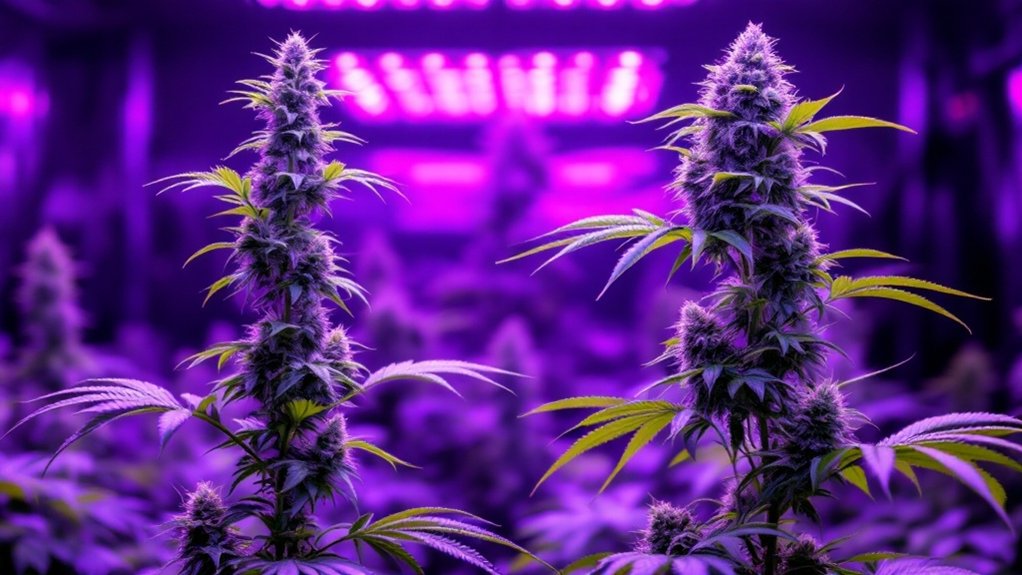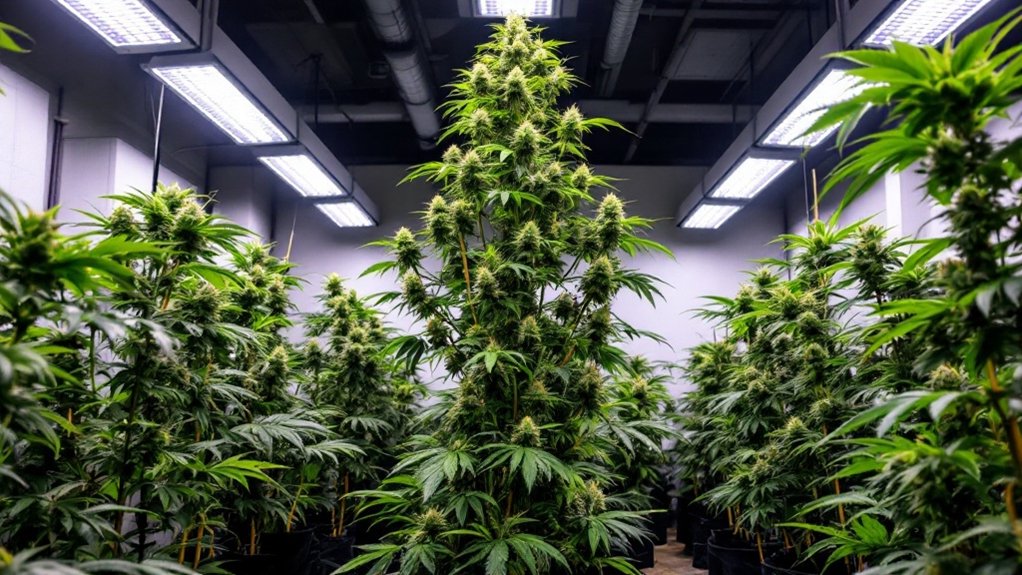Effective cannabis strain naming combines genetic heritage, effects, and sensory qualities to create consumer recognition. Strategic names often reflect parent strains, expected effects, or distinctive flavors, helping consumers navigate the market and set appropriate expectations. Regulatory considerations require avoiding appeal to minors and respecting trademark law. With over 700 existing strains, creators must balance originality with meaningful description. The right name creates brand recognition while communicating essential information about the product’s experience.

While cannabis cultivators have traditionally relied on instinct and personal preference when naming new strains, the rapidly evolving legal market now demands strategic, thoughtful naming practices. The complexity of strain naming reflects multiple considerations that impact consumer recognition, regulatory compliance, and market differentiation. Successful strain names often derive from genetic lineage, blending parent strain names to signal flavor and effect profiles to experienced consumers.
Many cultivators leverage their strain’s genetic heritage in naming, combining recognizable parent strain names to create instant familiarity and credibility. This approach provides consumers with a shorthand understanding of what to expect, such as Berry White signaling characteristics from both Blueberry and White Widow parentage. For truly unique hybrids, entirely new names may better distinguish their particular characteristics from their genetic ancestors. Original landrace strains are particularly valued in this process, as they provide authentic geographic identifiers that connect consumers to cannabis’ natural history.
Effect-based naming strategies communicate anticipated experiences to potential consumers. Names that describe energizing, relaxing, or focus-enhancing properties help simplify decision-making, especially for newcomers maneuvering complex product offerings. While individual responses vary, these descriptive names provide helpful guidelines for expected outcomes. With over 700 named strains currently identified, creating distinctive and memorable names has become increasingly challenging for producers.
Sensory descriptors form another essential naming category, with names like Lemon Haze or Grape Ape immediately suggesting flavor and aroma profiles. These sensory-focused names help differentiate products in competitive markets while setting appropriate consumer expectations before purchase. Highlighting unique terpene profiles through naming can validate distinctive characteristics that consumers might experience. Strains like Skunk and Chemdawg are prime examples where distinct aromas directly influenced their market identity.
Cultural references and pop culture inspirations have become increasingly prevalent in strain naming since 2008. References to music, celebrities, and films create immediate recognition and memorability, while tributes to cannabis advocates like Jack Herer connect products to the broader cannabis movement. These culturally resonant names strengthen brand engagement through shared knowledge and nostalgia.
Regulatory considerations now greatly impact naming decisions, with many jurisdictions restricting names that might appeal to minors or reference candy. Compliance with trademark law and local regulations is essential for market access and avoiding costly legal disputes. Manufacturers must carefully vet potential names against existing trademarks and inappropriate associations.
The lack of standardization in cannabis naming presents both challenges and opportunities. While confusion can occur when identical strains carry different names across markets, this fluidity also allows for creative differentiation in increasingly crowded marketplaces. Ultimately, effective strain naming balances marketing appeal, regulatory compliance, and accurate representation of the product’s characteristics.
Frequently Asked Questions
How Do Legal Regulations Impact Cannabis Strain Naming?
Legal regulations considerably impact cannabis strain naming through several key restrictions. Producers must avoid names that appeal to minors, infringe on existing trademarks, reference health benefits, or contain misleading information.
State-by-state variations create compliance challenges for multi-state brands. These regulations have led to frequent rebranding of strains, pre-approval requirements by regulatory bodies, and the adoption of more strategic naming practices throughout the industry to avoid potential legal disputes.
Can Strain Names Influence Customer Perception of Effects?
Strain names greatly influence customer perception of cannabis effects through expectation-based mechanisms. Research indicates that names create preconceptions about experiences, regardless of actual chemical composition.
Consumers often report effects that align with a strain’s name rather than its cannabinoid or terpene profile. This “expectancy effect” can be powerful enough to produce placebo-like experiences, with descriptive names (e.g., “Sleepy Time” or “Energy Boost”) particularly effective at priming users for specific outcomes.
Should Strain Names Reflect Thc/Cbd Content?
Including THC/CBD content in strain names could greatly benefit consumers, particularly newcomers and medical users seeking specific effects.
While traditional naming conventions prioritize creativity and marketing appeal, incorporating cannabinoid information would enhance transparency and help customers make more informed decisions.
However, this approach must balance scientific accuracy with marketing considerations. The industry might consider hybrid naming systems that preserve brand identity while clearly communicating potency, potentially reducing consumer confusion and improving satisfaction through more predictable experiences.
Are There Trademark Issues With Popular Cannabis Strain Names?
Significant trademark issues exist with many popular cannabis strain names. Companies face lawsuits when using names resembling established brands, as seen in cases involving “Gorilla Glue #4,” “Trapatio,” and Better Made-inspired products.
These legal challenges typically result in settlements requiring rebranding, removal of marketing materials, and potential profit forfeiture.
Cannabis businesses are particularly vulnerable because they cannot secure federal trademark protection due to marijuana’s federal illegality, creating an uncertain legal landscape for strain naming practices.
Do Naming Trends Differ Across Different Cannabis Markets?
Cannabis naming trends vary greatly across different markets. Regional preferences influence naming styles, with mature markets often featuring more creative, playful names, while emerging markets may retain traditional, origin-based nomenclature.
Regulatory environments also shape naming conventions, as some jurisdictions prohibit names appealing to children or infringing on trademarks.
Cultural factors further differentiate markets, with consumers in different regions responding to distinct references, humor styles, and linguistic patterns that resonate with local sensibilities.









